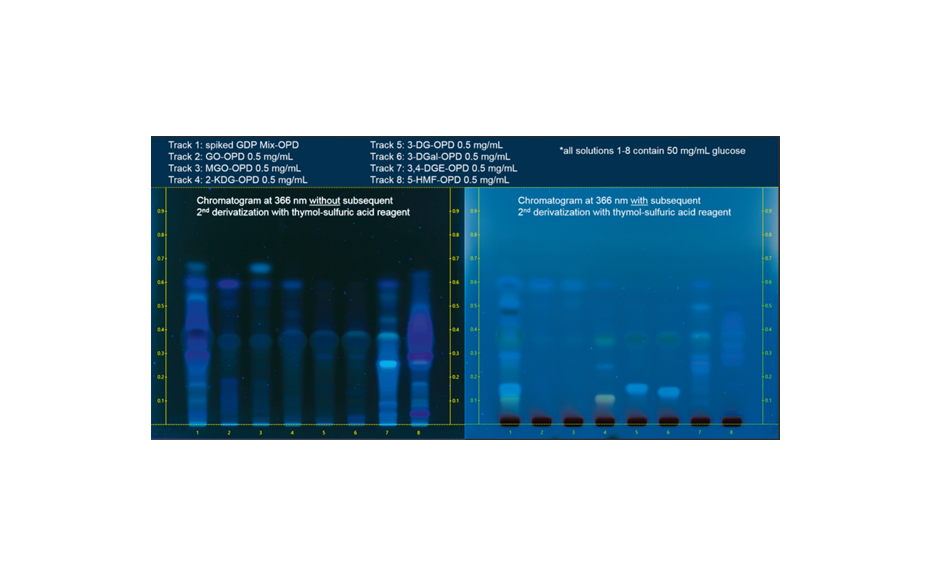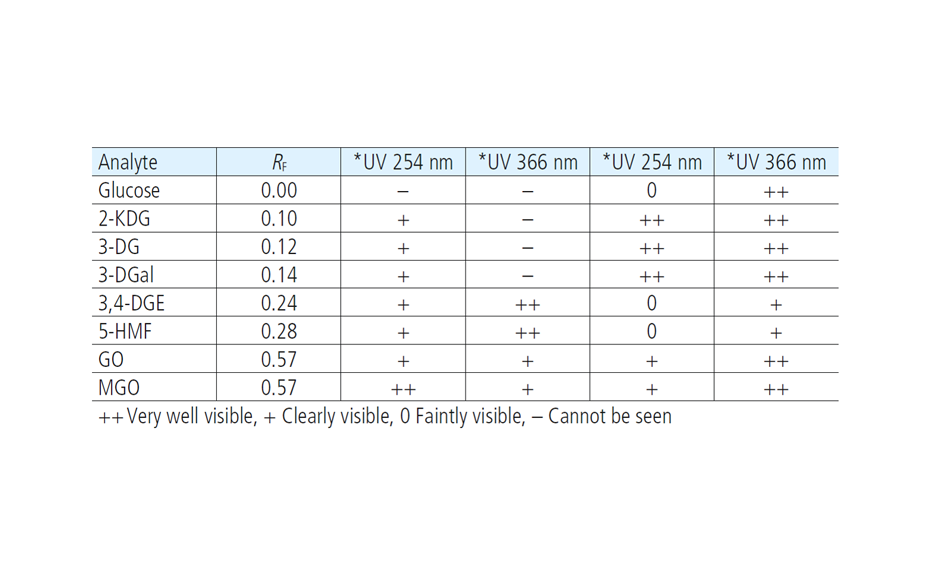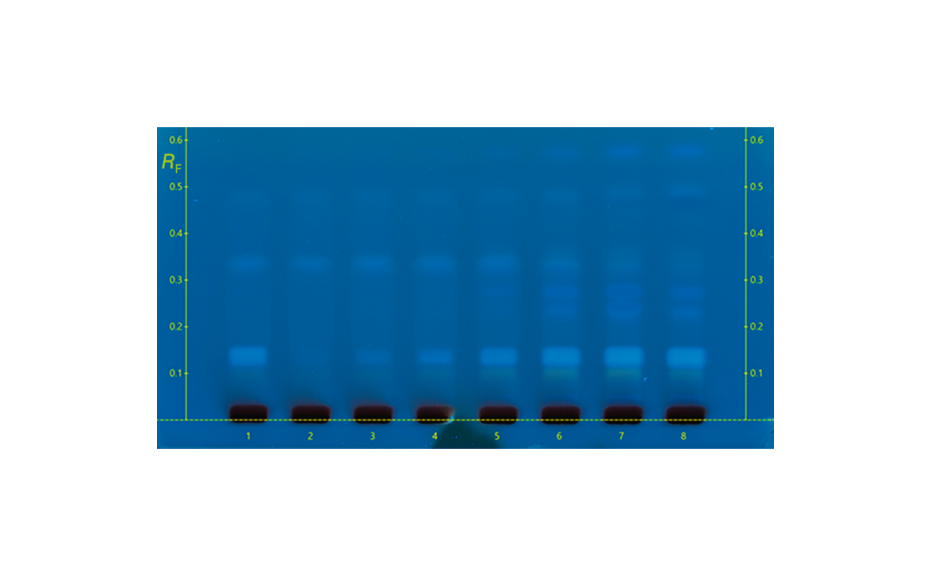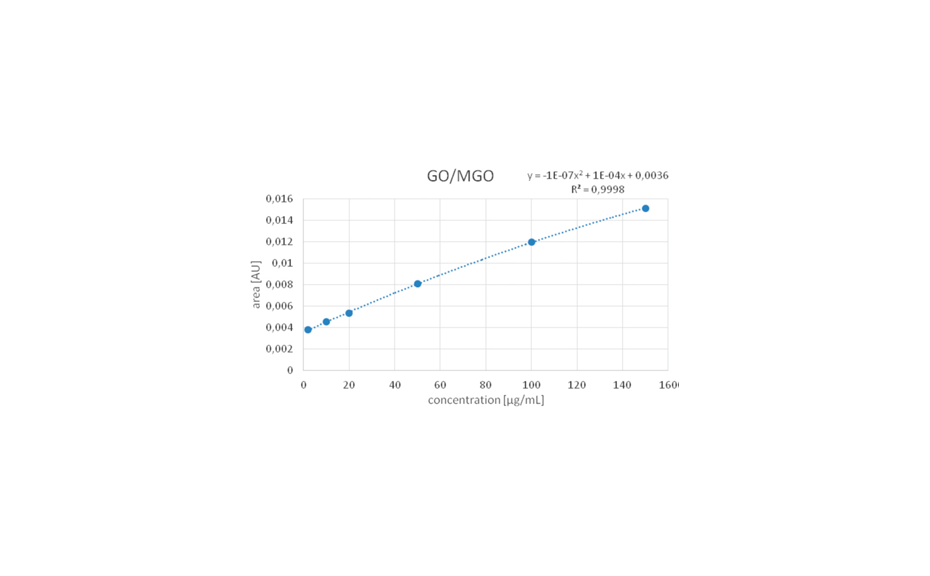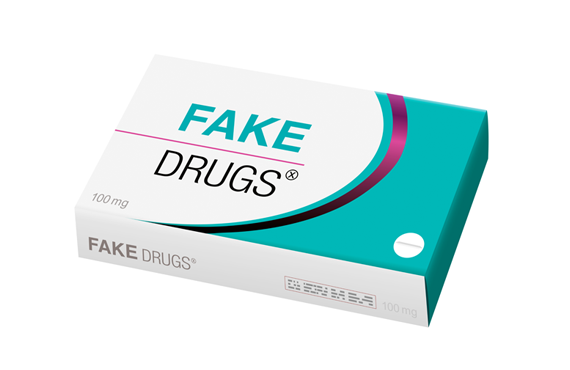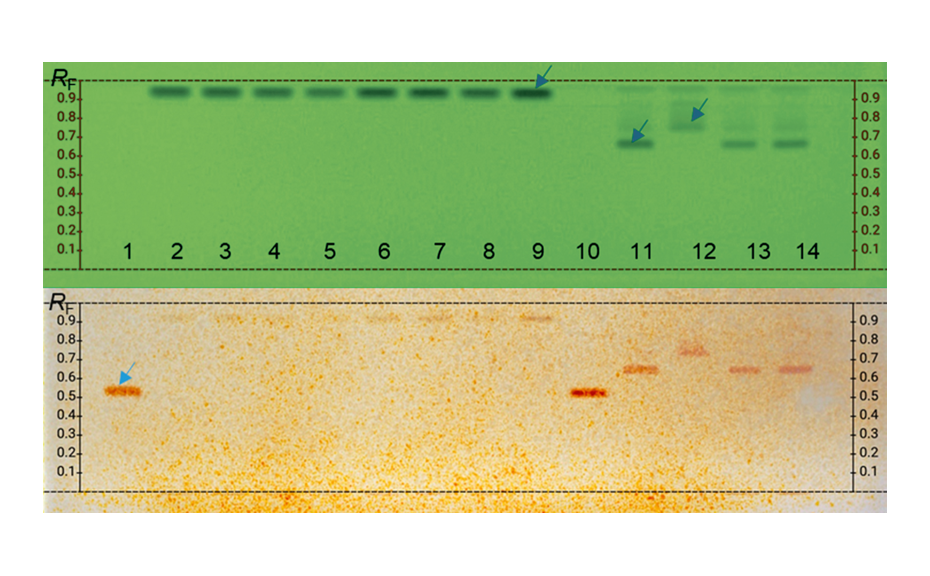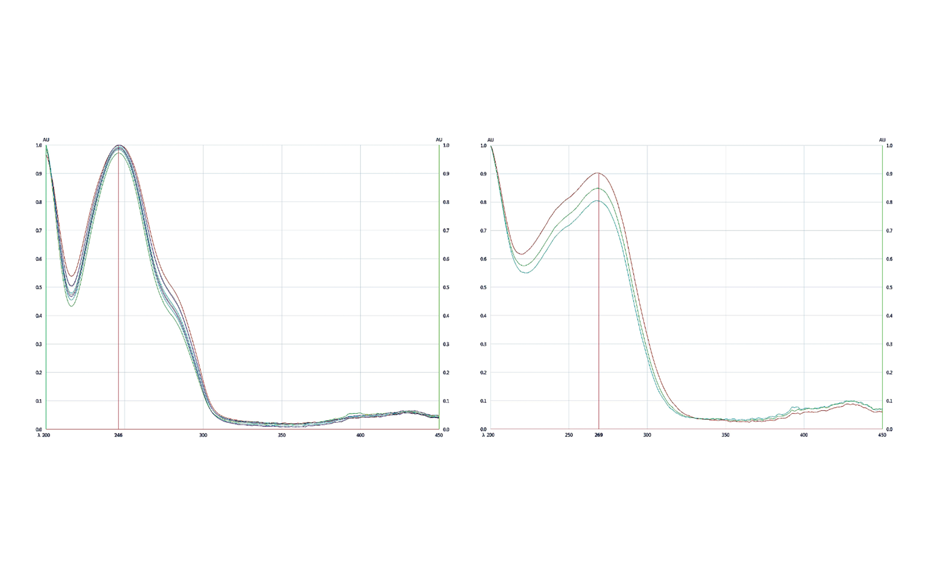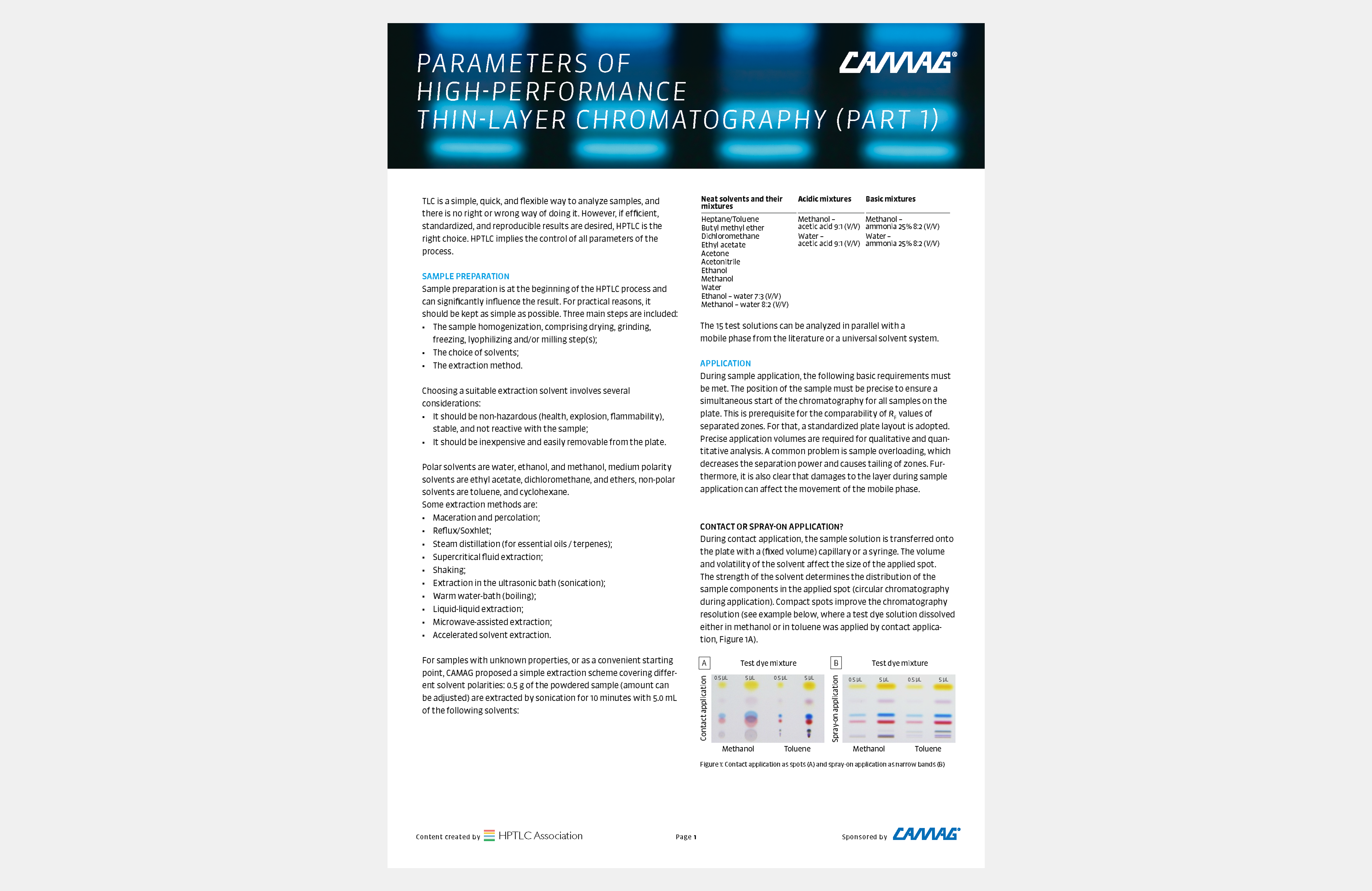HPTLC routine analysis using complementary developing solvents
Introduction
In quality control with HPTLC, a specific method using optimized developing solvents is generally used for each kind of sample. In order to simplify routine analysis, the lab team at CAMAG has developed the complementary developing solvents (CDS) concept based on one solvent of low polarity (LPDS), one of medium polarity (MPDS), and one of high polarity (HPDS). With these three developing solvents (DS), each on a separate plate and targeting compounds of different polarity, the same complex sample could be spread over up to three times the separation distance on a single plate, making available more information about the sample’s composition. Single substances can be characterized with three RF values instead of one. Even though this approach triples the analytical workload (3 analyses instead of one), it may be considered, that routine work with multiple and diverse samples can be simplified and maintenance of methods, plates, solvents and standards can be kept to a minimum, particularly if the process is automated. Identification of individual compounds will be more certain. A further advantage of the concept is that all samples can be compared with any other sample that has been previously analyzed with the same CDS and data could be compiled in a database for treatment with advanced algorithms.
In their paper [1] the researchers at CAMAG describe the development, validation and application of a CDS, applicable to a large number of very diverse samples including individual compounds and complex herbal materials. In combination with thorough standardization, the concept could help positioning HPTLC as a very powerful, general, and medium to high throughput technique for routine analysis and sophisticated research.
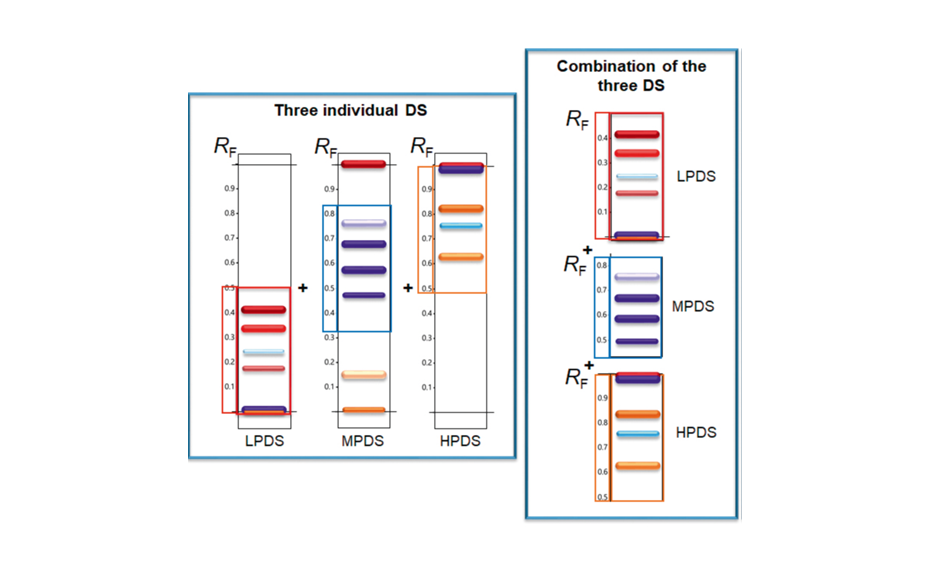
Visualization of the CDS and its fingerprints
Standard solutions
The Universal HPTLC mix (UHM) was prepared in house according to [2]. With the UHM, HPTLC laboratories have a single solution, applicable as system suitability test to a wide range of chromatographic systems.
Sample preparation
Powdered herbal drugs and finished products were prepared in methanol using 10 min sonication followed by 5 min centrifugation. Ginkgo biloba, Camellia sinensis, Styphnolobium japonica and Piper nigrum were prepared at 100 mg/mL, Curcuma longa at 66.7 mg/mL, Angelica samples at 200 mg/mL, and the poly-herbal formulation at 50 mg/mL.
Chromatogram layer
HPTLC plates silica gel 60 F254 (Merck), 20 x 10 cm are used.
Sample application
Samples are applied as bands with the Automatic TLC Sampler (ATS 4), 15 tracks, band length 8.0 mm, distance from left edge 20.0 mm, distance from lower edge 8.0 mm.
Chromatography
Plates were developed with the three developing solvents in the ADC 2 with activation of the plate at 33% relative humidity for 10 min using a saturated solution of magnesium chloride. LPDS was used without saturation, whereas MPDS and HPDS were used with 20 min chamber saturation (with filter paper). The developing distance for all three methods was 70 mm (from the lower edge). Plates were dried for 5 min.
Post-chromatographic derivatization
Natural product (NP) reagent (1.0 g of 2-aminoethyl diphenylborinate in 100.0 mL of methanol) is used as derivatization reagent for the identification of Camelia sinensis, Styphnolobium japonicum and Ginkgo biloba. For Ginkgo biloba, the derivatization with NP is followed by anisaldehyde sulfuric acid (AS) reagent [slowly and carefully 170.0 mL of ice-cooled methanol are mixed with 20.0 mL of acetic acid and 10.0 mL of sulfuric acid; mixture is allowed to cool to room temperature, then 1.0 mL of anisaldehyde (p-methoxybenzaldehyde) is added]. Only AS reagent is used for the identification of Curcuma longa and Piper nigrum.
Documentation
Images are captured with the TLC Visualizer 2 in UV 254 nm, UV 366 nm, and white light prior to derivatization, and UV 366 nm, and white light after derivatization (when needed).
Densitometry
For the system suitability test using the UHM, TLC Scanner 4 and visionCATS are used in absorbance mode at 254 nm and in fluorescence mode at 366>/400 nm, with slit dimension 5.00 x 0.20 mm and scanning speed of 50 mm/s.
Results and discussion
The solvents selected for the CDS had to meet the following criteria: be of minimal hazard, stable, and easily available, to cover all selectivity groups according to Snyder, and include a broad range of polarity. The composition and properties of the CDS are shown in the table.
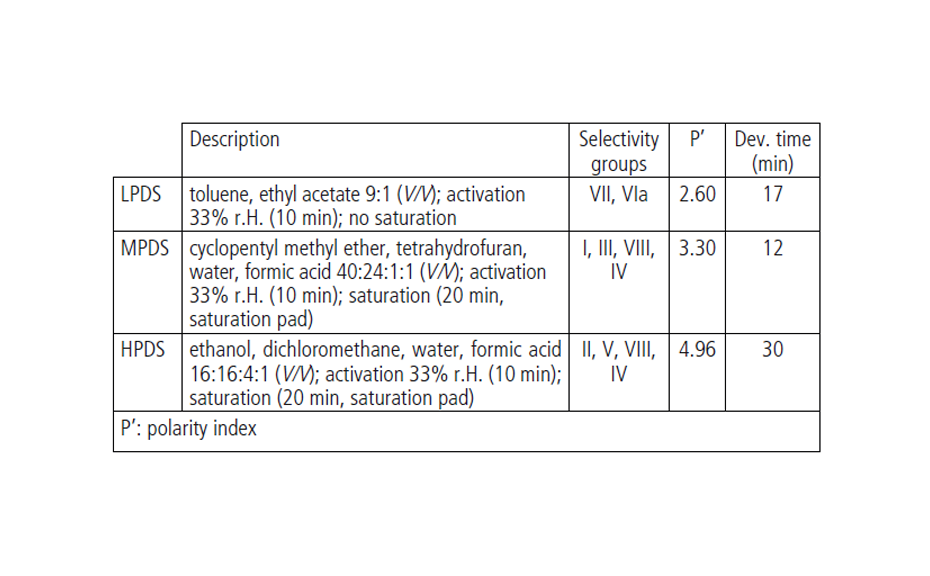
Composition and properties of the CDSs
The power of the CDS concept is illustrated with HPTLC fingerprints for identification of herbal drugs, herbal products, and poly-herbal formulations. Green tea leaves, for example, produce a different fingerprint with each of the DS zooming into specific polarities of the sample composition. The composite fingerprint gives complementary information emulating an extended developing distance.
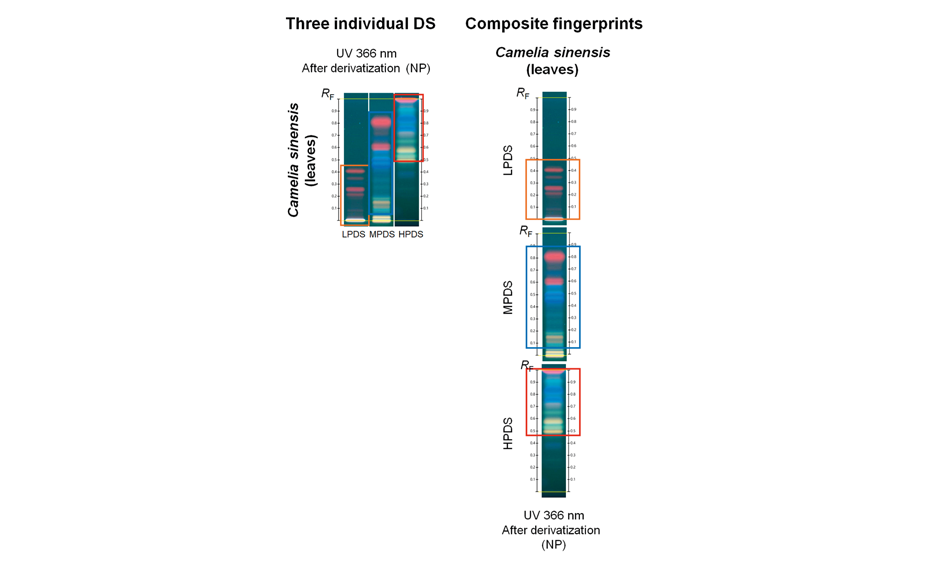
HPTLC fingerprints of green tea leaves obtained with the CDS
HPTLC can easily detect adulteration of one herbal drug with another, using optimized developing solvents. For example, a method from the HPTLC Association [3] detects adulteration of Ginkgo biloba leaves with fruits of Styphnolobium japonicum. The CDS achieves the same goal, but offers even more certainty based on the data obtained with MPDS and HPDS.
![Detection of 20% Styphnolobium japonicum fruit in Ginkgo biloba leaves with method [3] and CDS](/wp-content/uploads/2024/08/CBS129_Complementary-developing-solvents_img4.png)
Detection of 20% Styphnolobium japonicum fruit in Ginkgo biloba leaves with method [3] and CDS
Poly-herbal formulations such as products containing Curcuma longa and Piper nigrum are generally identified based on specific markers. The CDS can identify with certainty the presence of curcuminoids for turmeric and piperine for black pepper.
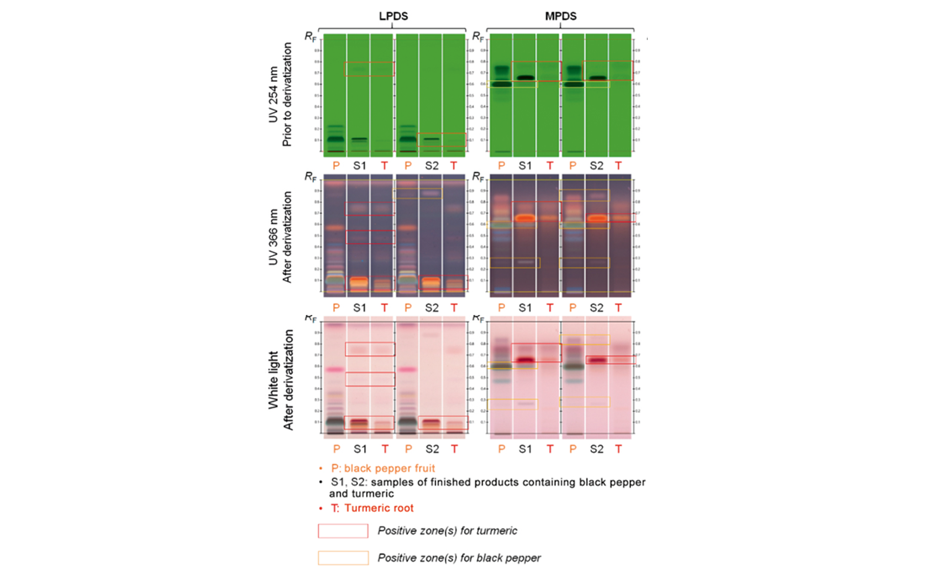
Fingerprints of Curcuma longa and Piper nigrum in comparison to those of two poly-herbal products
The CDS has been qualified using the universal HPTLC mix (UHM). A maximum margin of error of 0.014 was determined for the relevant zones.
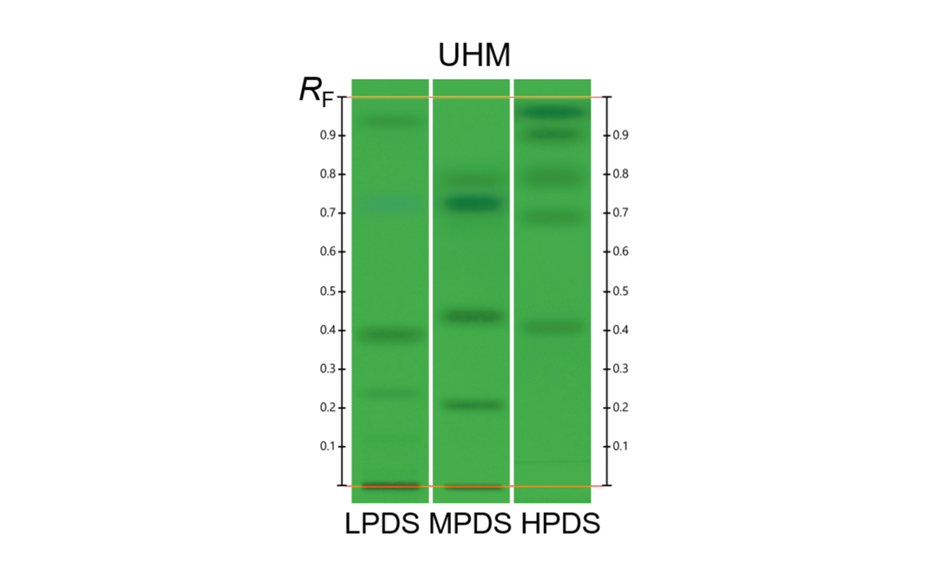
Separation of the UHM components with the CDS
Conclusion
The examples above illustrate the potential of the CDS for replacing the established methods for identification of herbal materials. Additional information concerning the chromatographic behavior of representative substances from different chemical classes is presented in the original paper [1]. When combined with fully automated chromatography, the CDS concept may become the basis for new applications of HPTLC in routine analysis and sophisticated research.
Literature
[1] T.K.T. Do et al. (2022) JPC, https://doi.org/10.1007/s00764-022-00185-1.
[2] T.K.T. Do et al. (2021) J. Chromatogr. A. 1638, https://doi.org/10.1016/j.chroma.2020.461830.
[3] HPTLC Association, Identification method of Ginkgo biloba, Leaf and leaf extract (flavonoids), (n.d.). https://www.hptlc-association.org/methods/methods_ for_identification_of_herbals.cfm.
Contact: Dr. Tiên Do, CAMAG, Sonnenmattstrasse 11, 4132 Muttenz, Switzerland, tien.do@camag.com
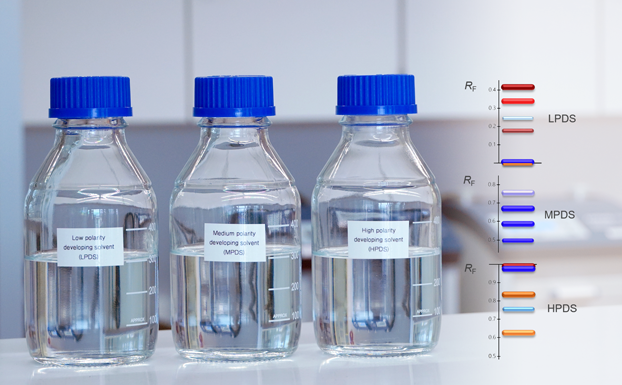
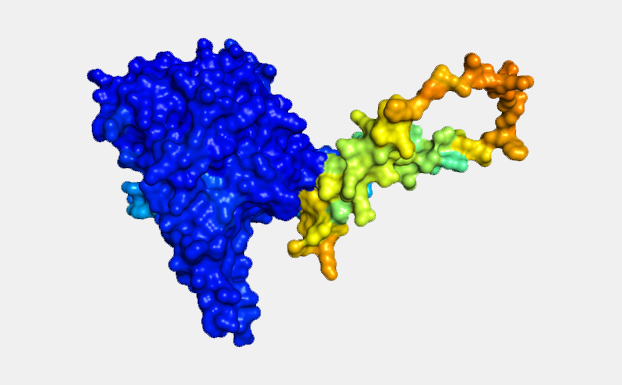




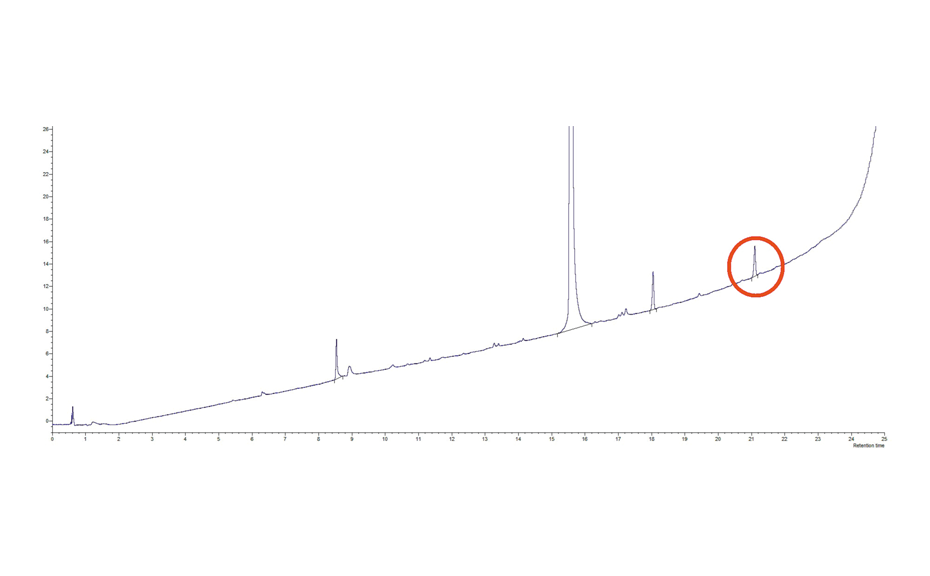
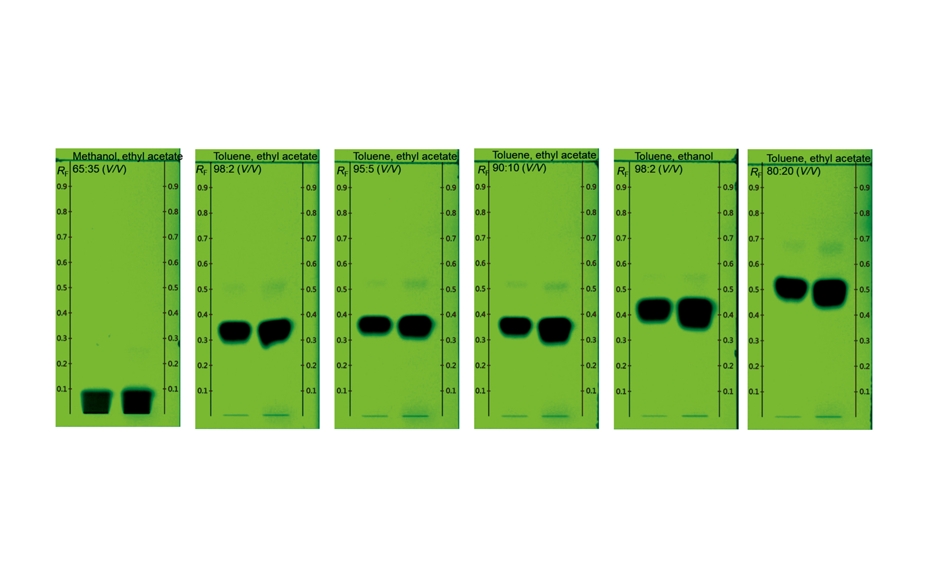
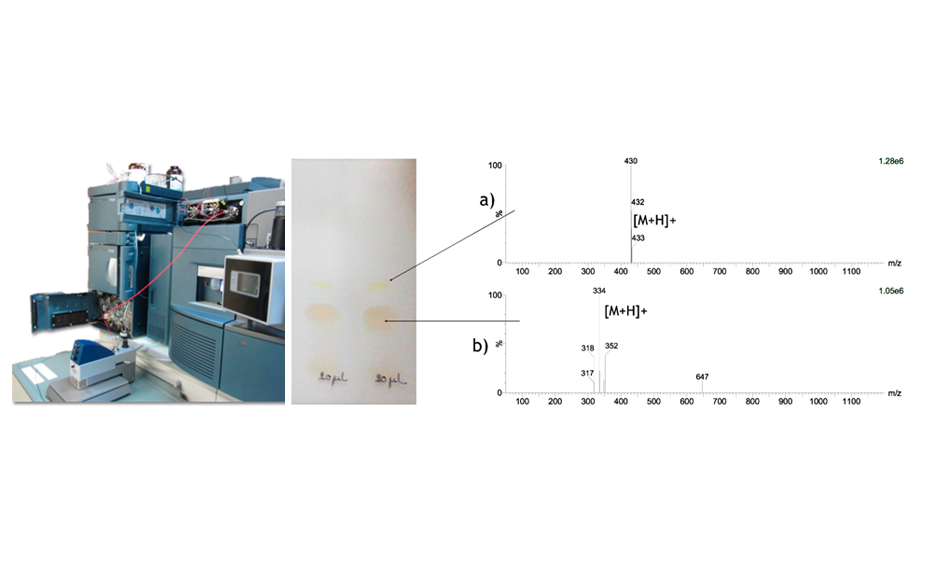
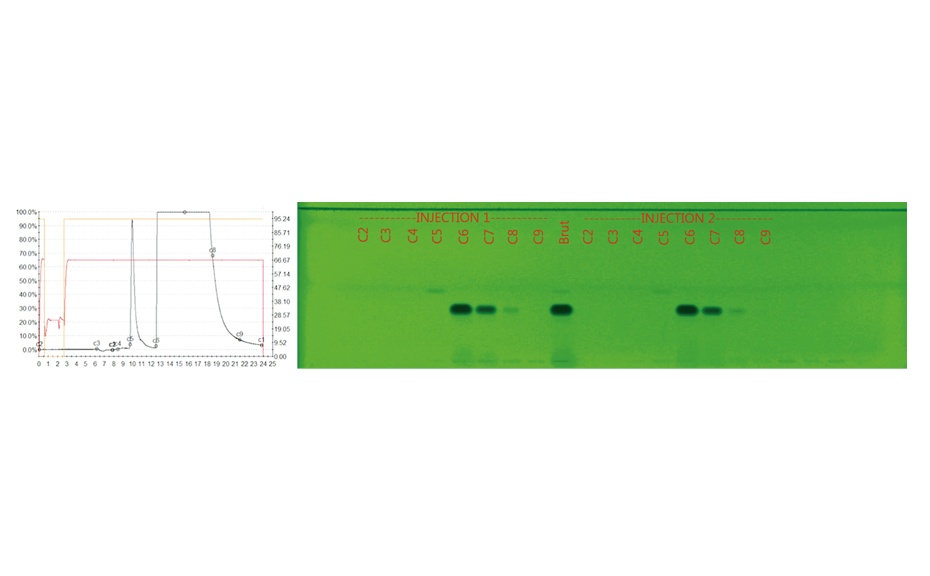
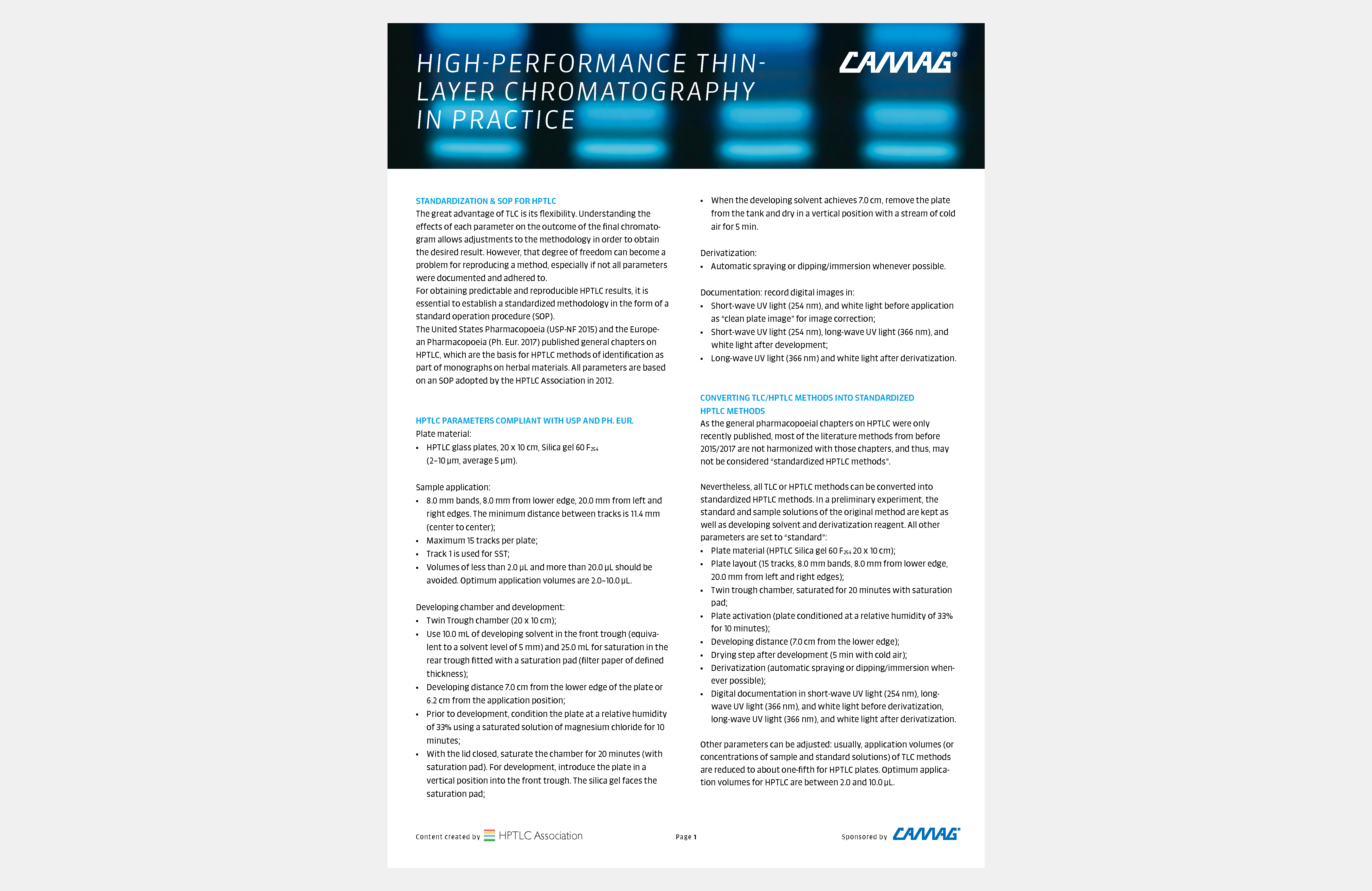
![Figure 1: Transformation of the digital image of the HPTLC chromatogram into the corresponding peak profile from image (PPI). Adapted from [2]](/wordpress/wp-content/uploads/2024/08/WP4_Fig1.png)

![Figure 3: Identification – evaluation of multiple samples of Angelica gigas root samples, and average, representative fingerprint (track A) in short-wave UV light 254 nm (upper) and in long-wave UV light 366 nm (bottom). Adapted from [2]](/wordpress/wp-content/uploads/2024/08/WP4_Fig3.png)
![Figure 4: Purity – detection of z-ligustilide (characteristic of the confounding species) in A. gigas root. Image and PPI evaluations. Red bars: peak height of z-ligustilide in mixtures of A. acutiloba and A. gigas root. Blue bars: peak height of z-ligustilide in mixtures of A. sinensis and A. gigas root. Adapted from [2]](/wordpress/wp-content/uploads/2024/08/WP4_Fig4.png)
![Figure 5: Test MC against a reference standard equivalent to the MC. Image and PPI evaluations, and % content of D/DA, of 24 samples of A. gigas root. Adapted from [2]](/wordpress/wp-content/uploads/2024/08/WP4_Fig5.png)
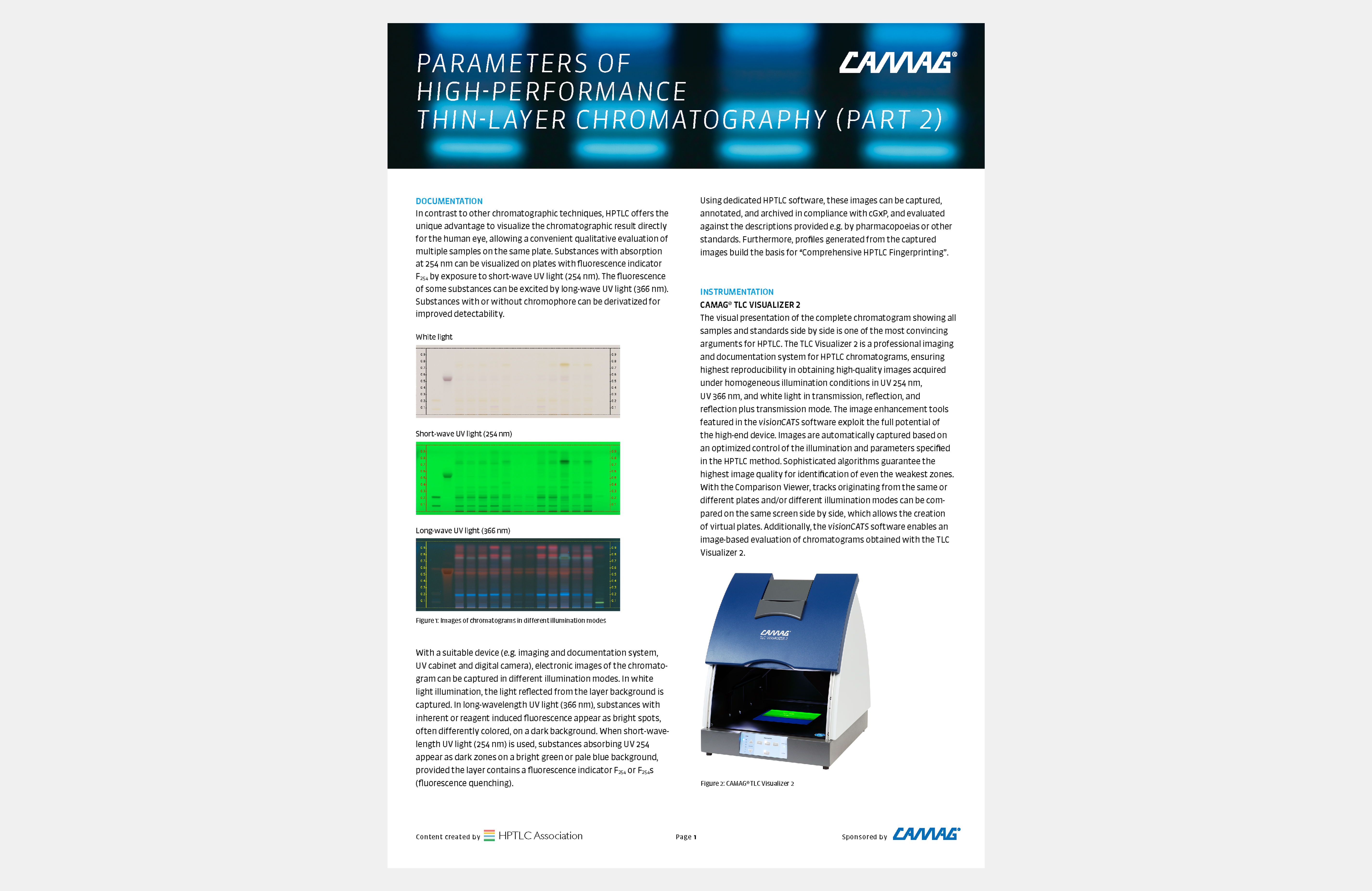
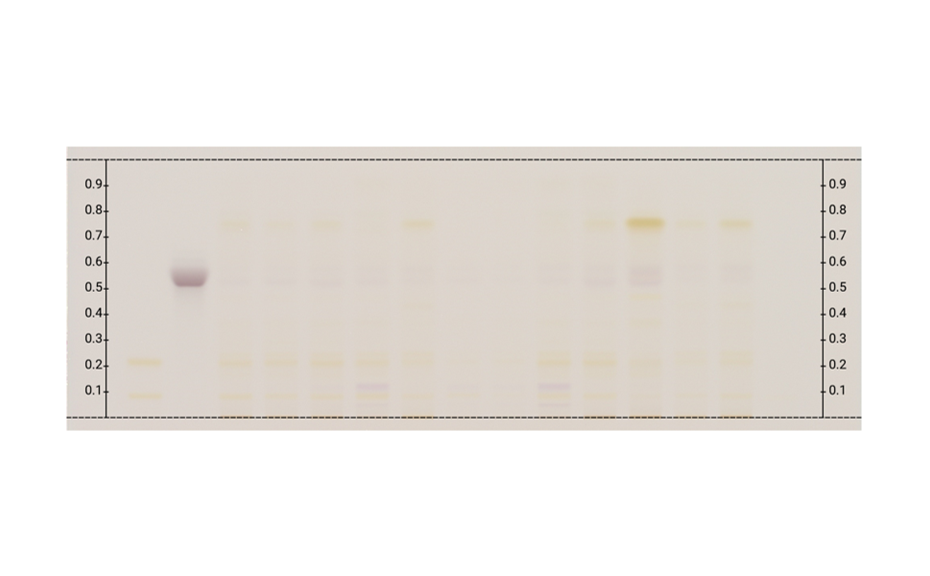
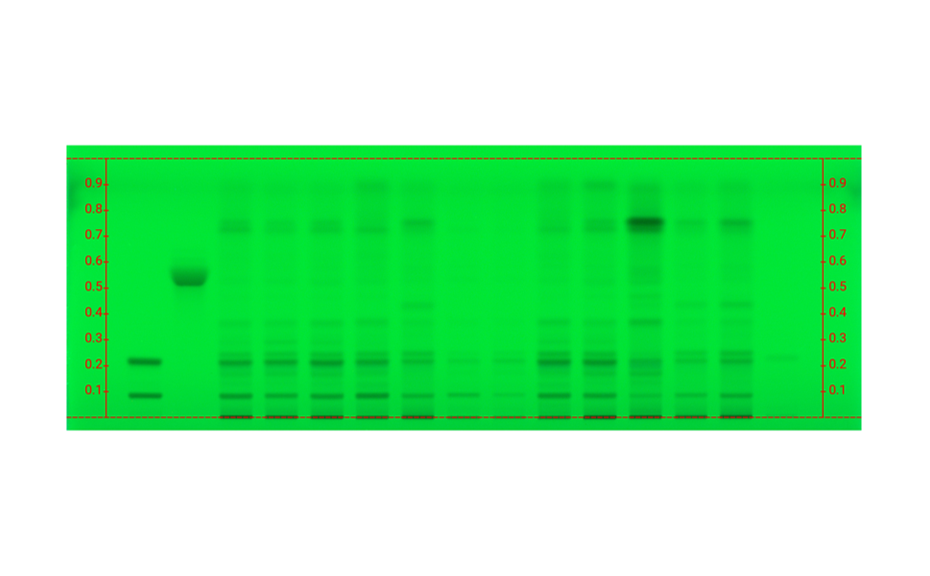
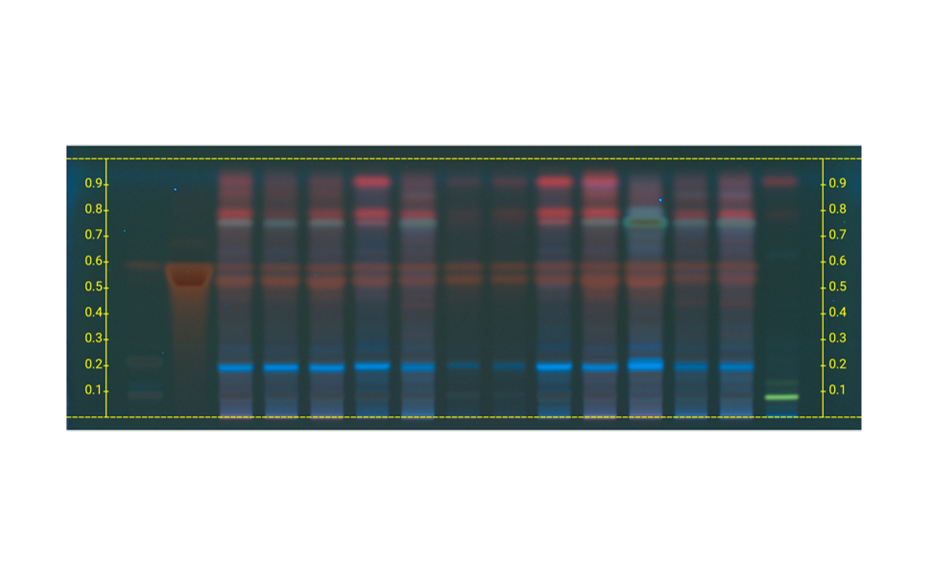
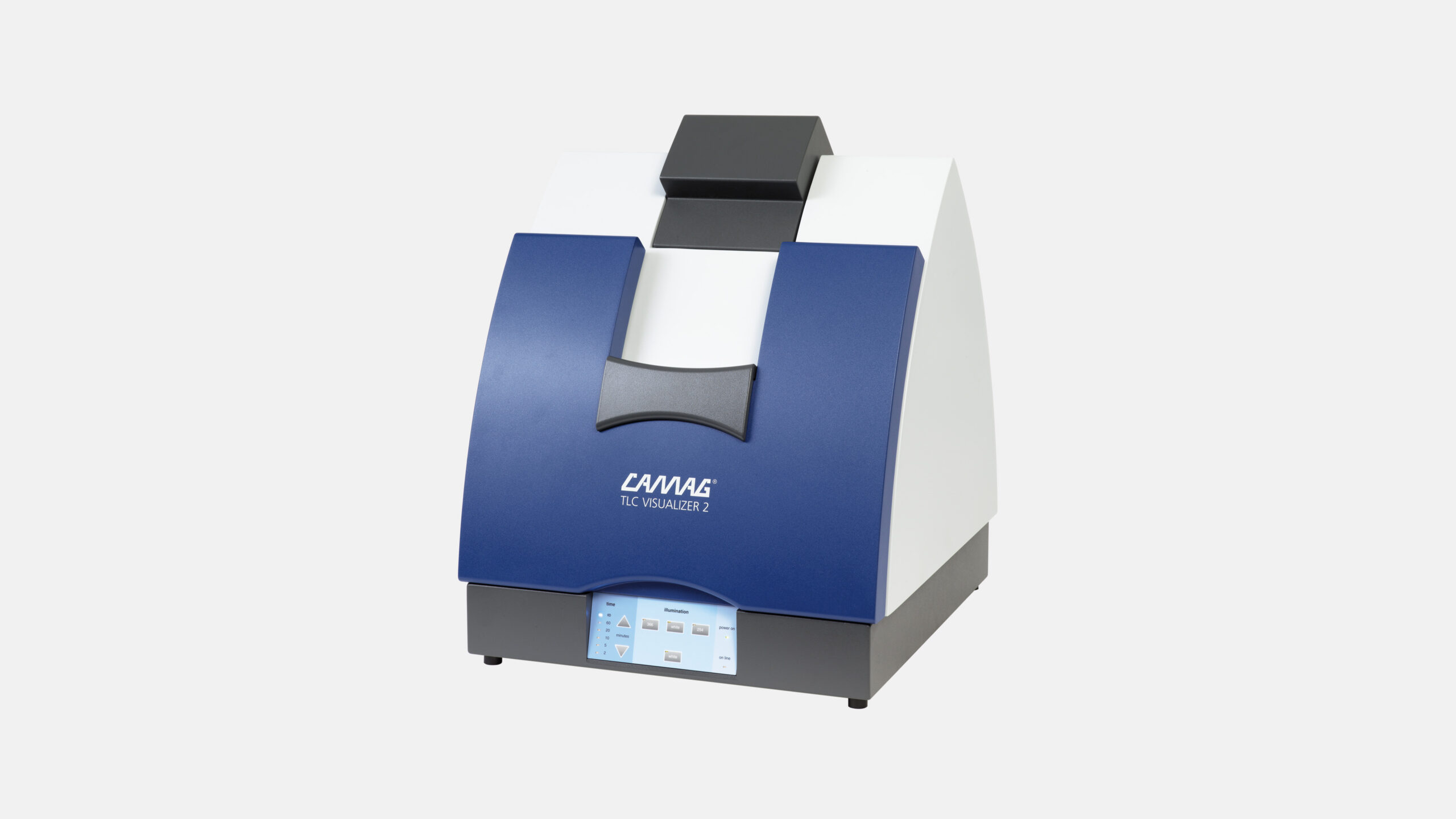
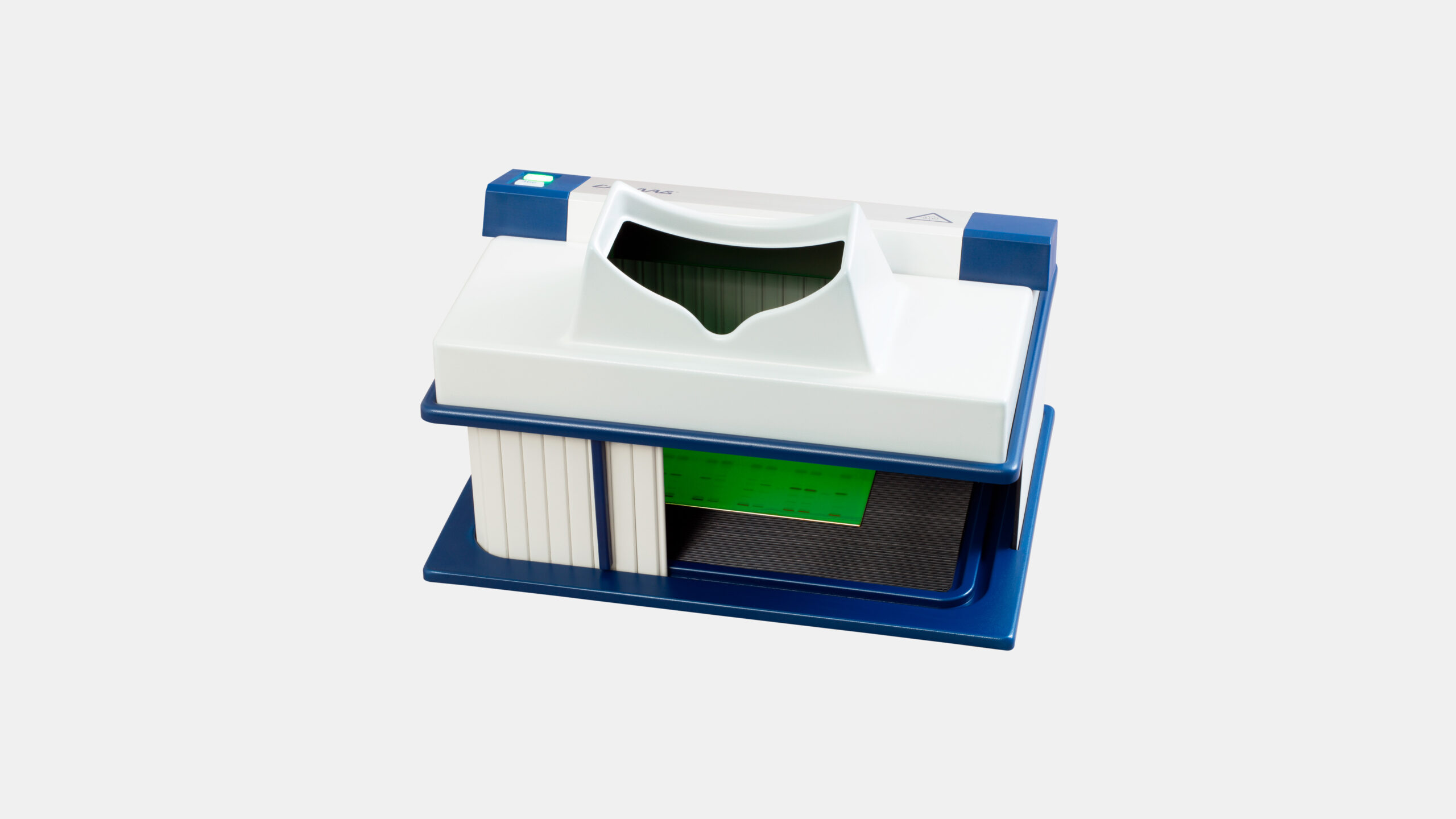
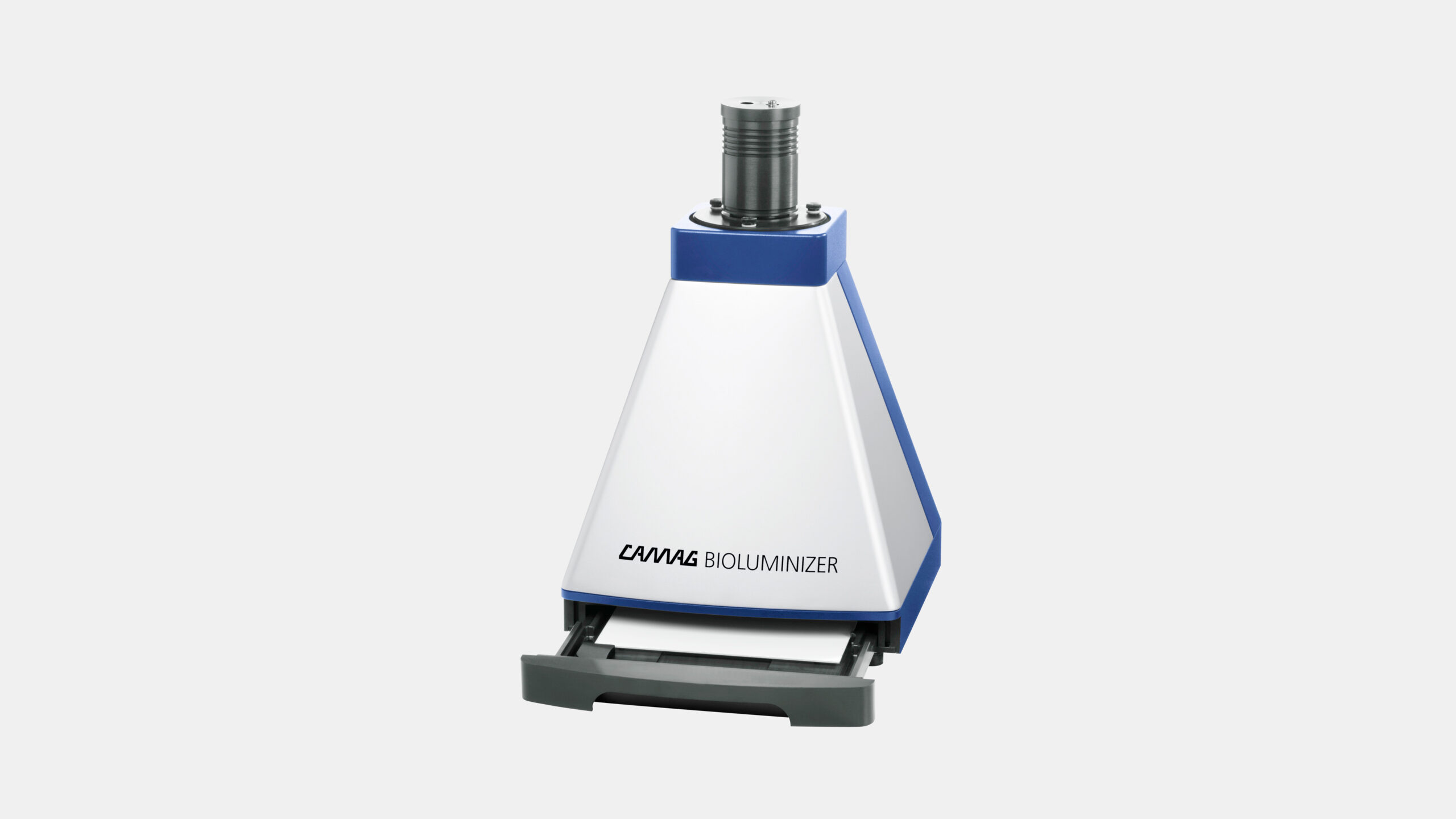
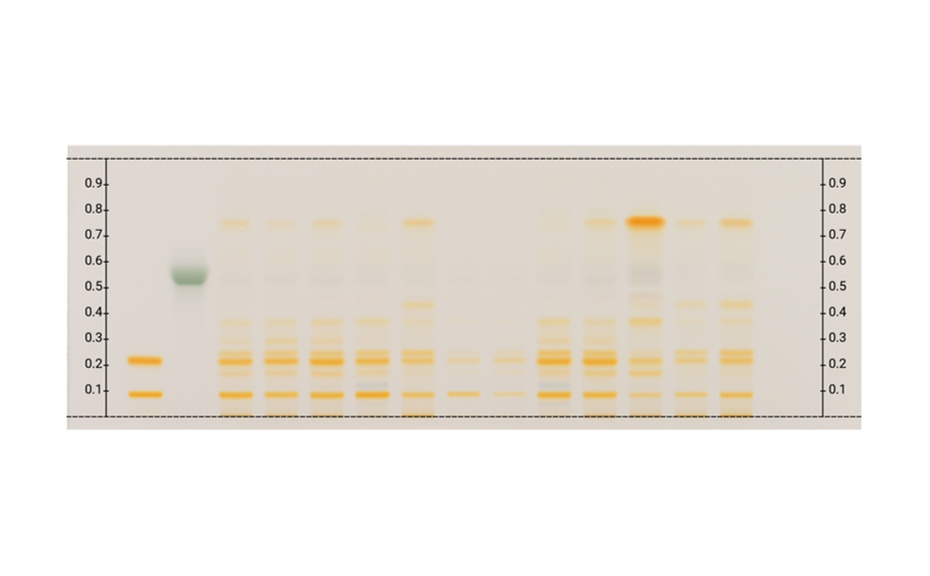
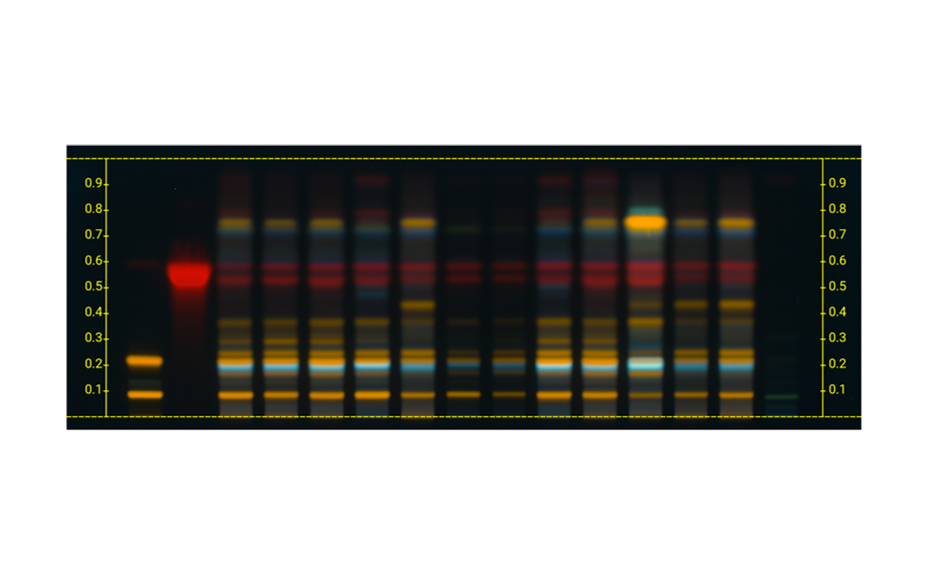
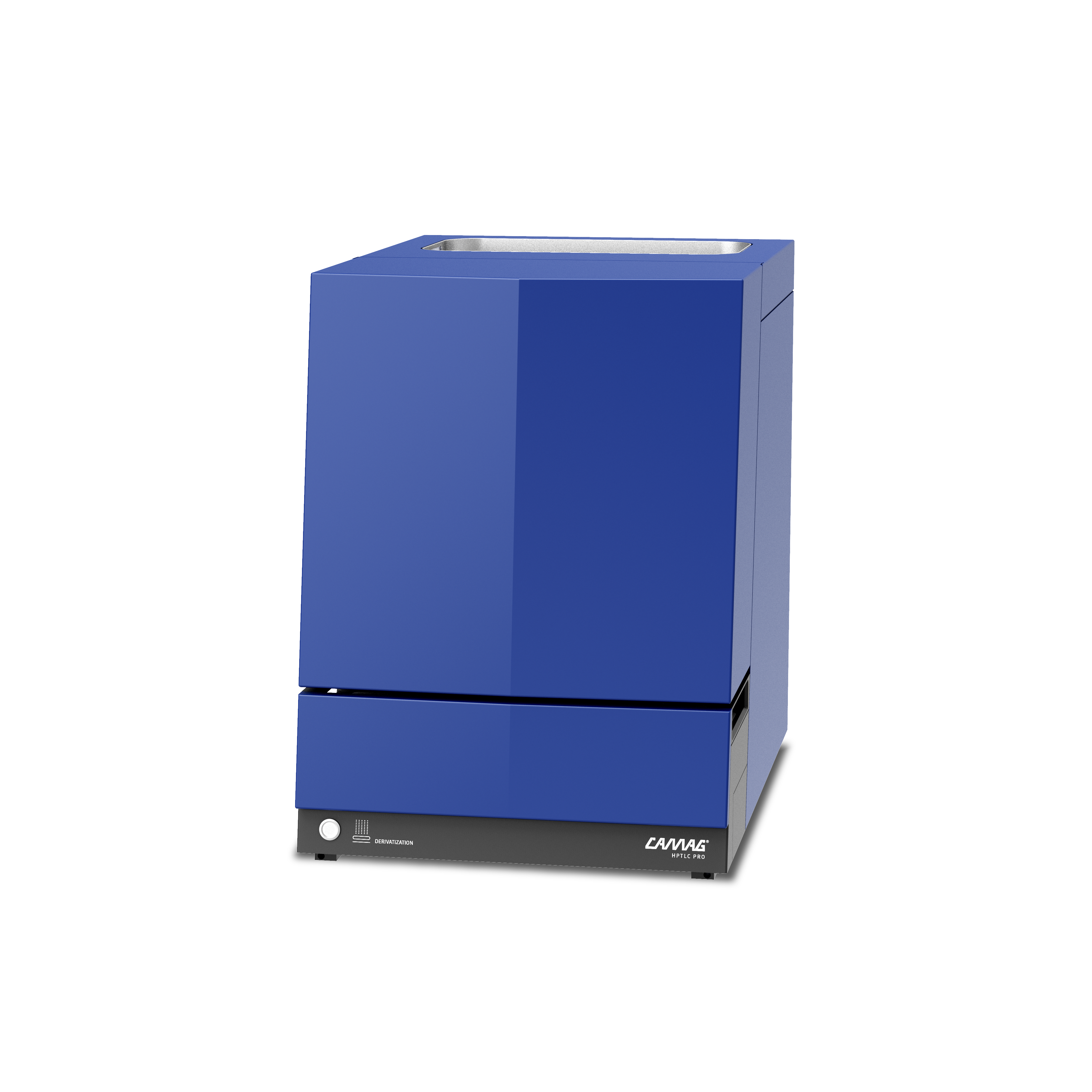
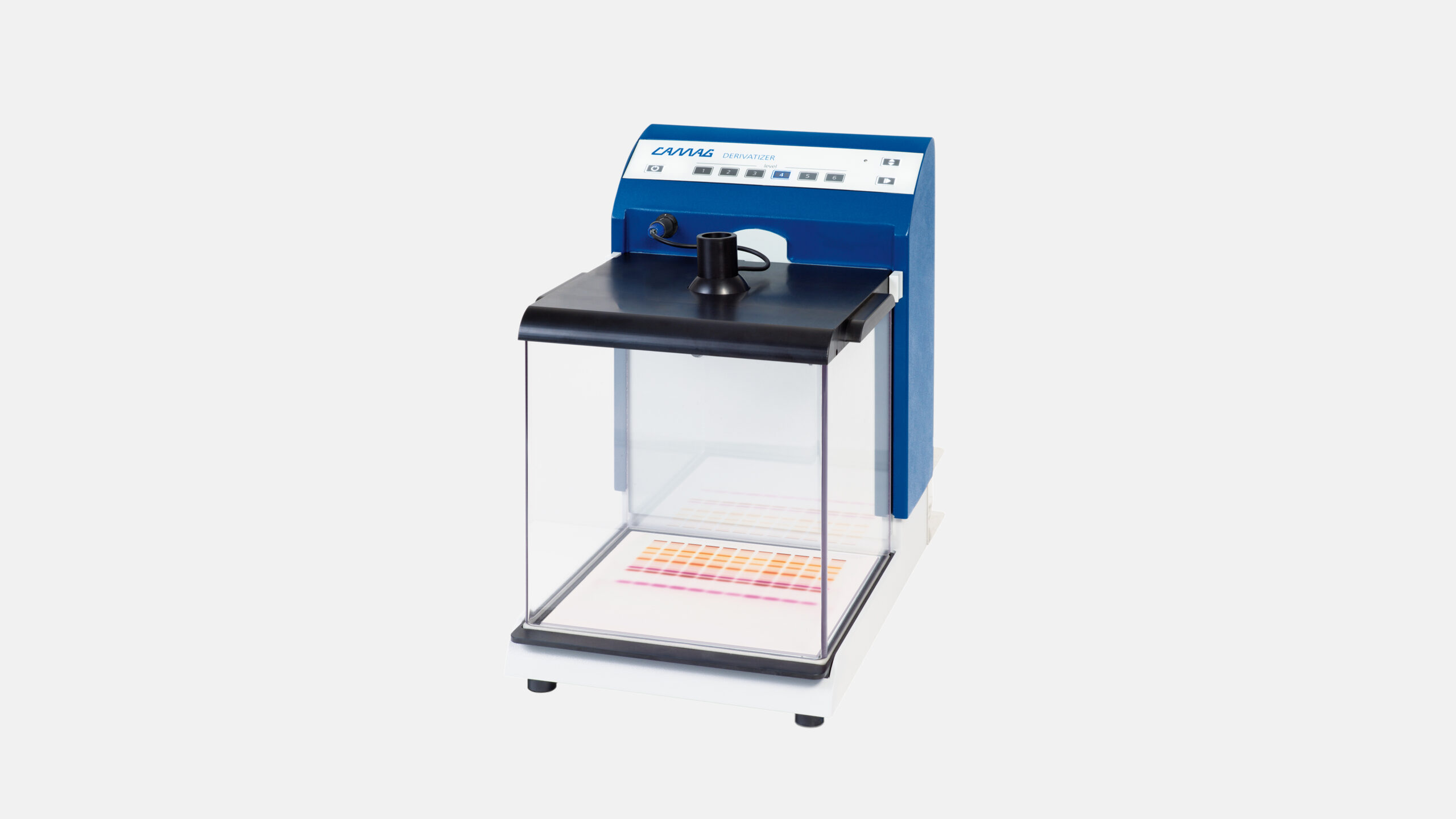
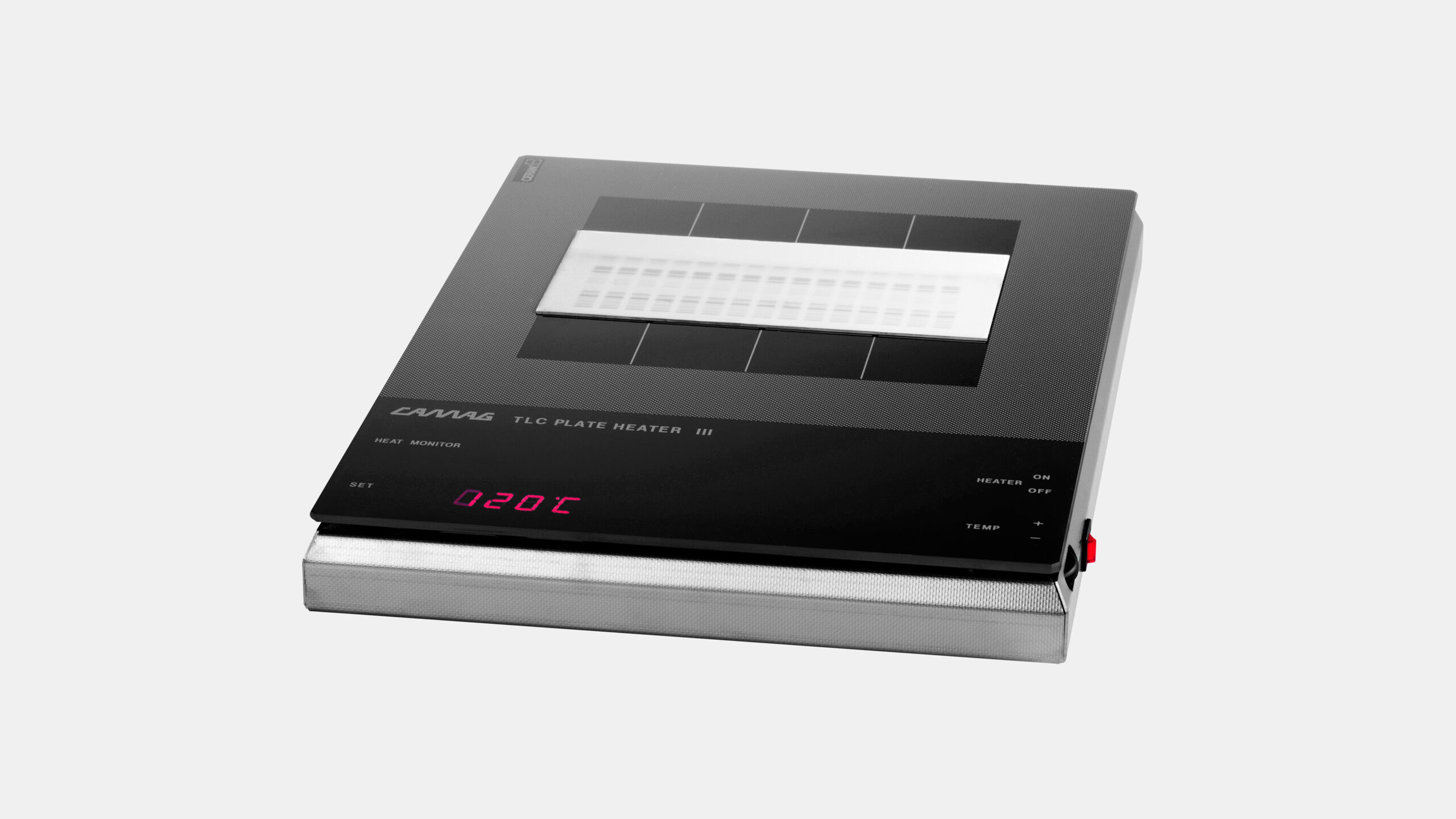
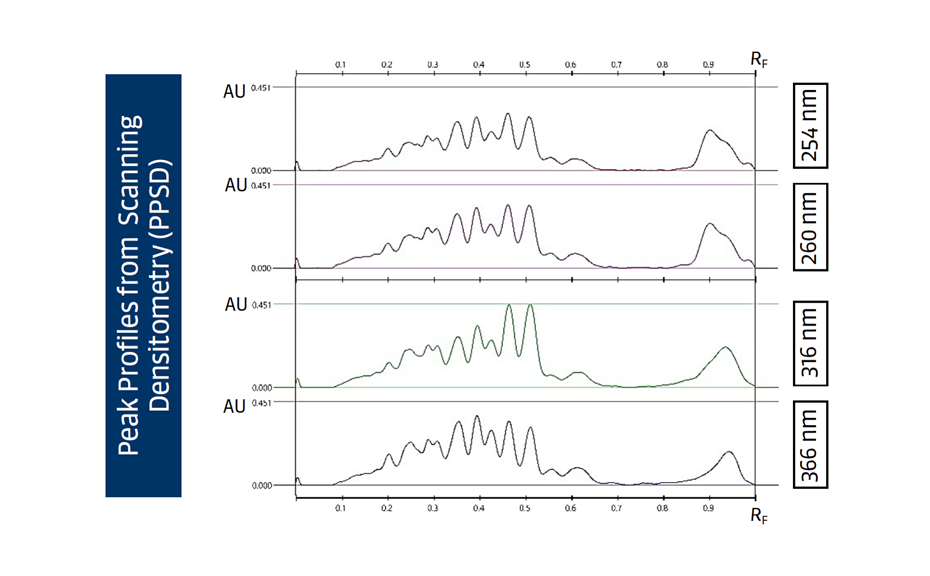
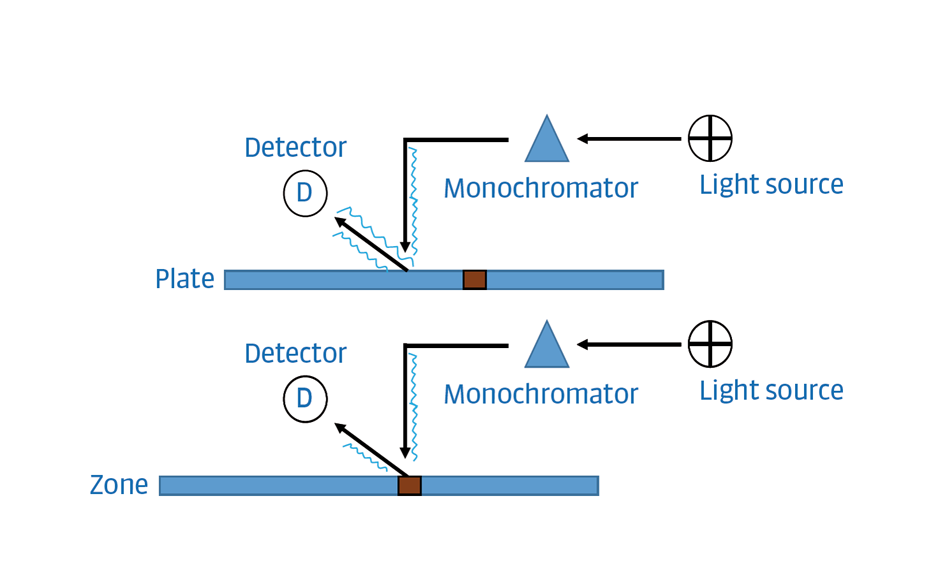
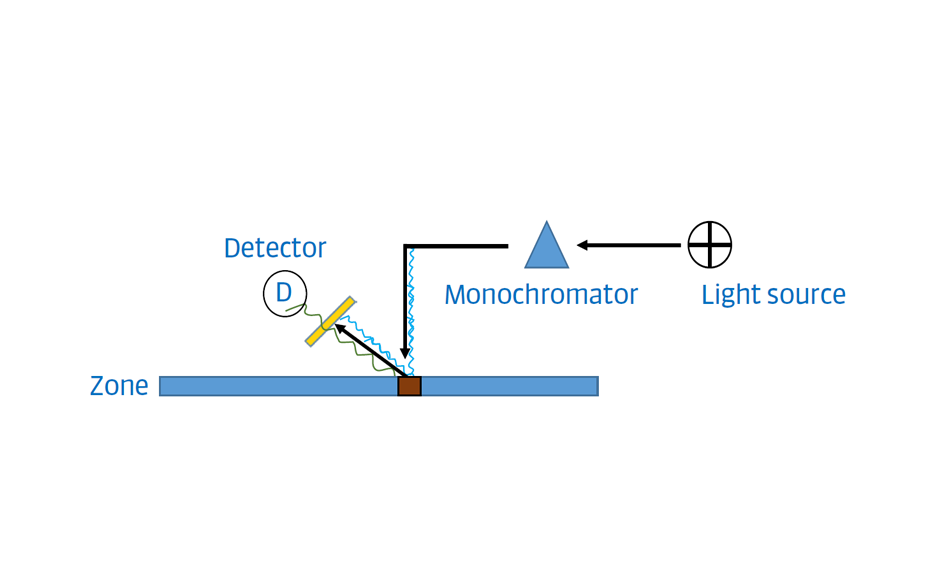
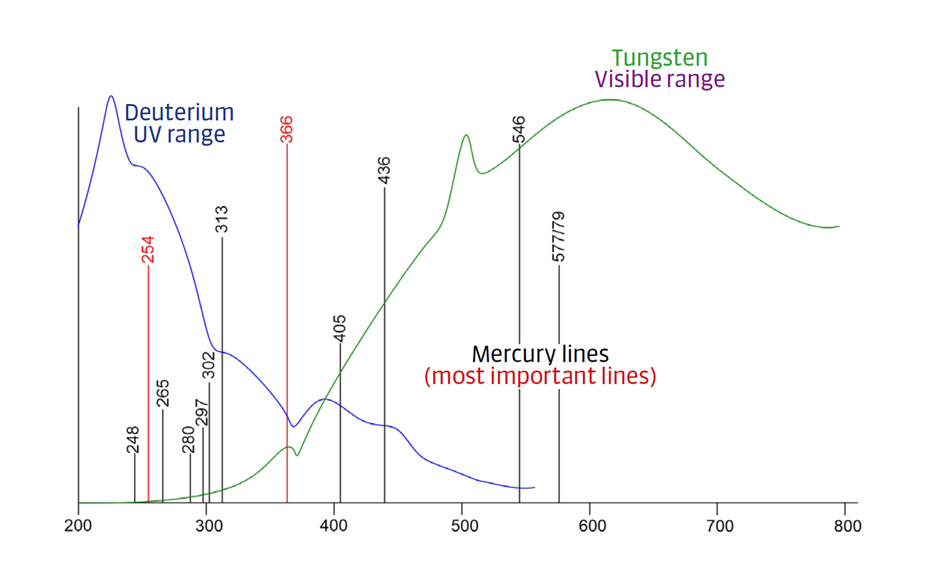
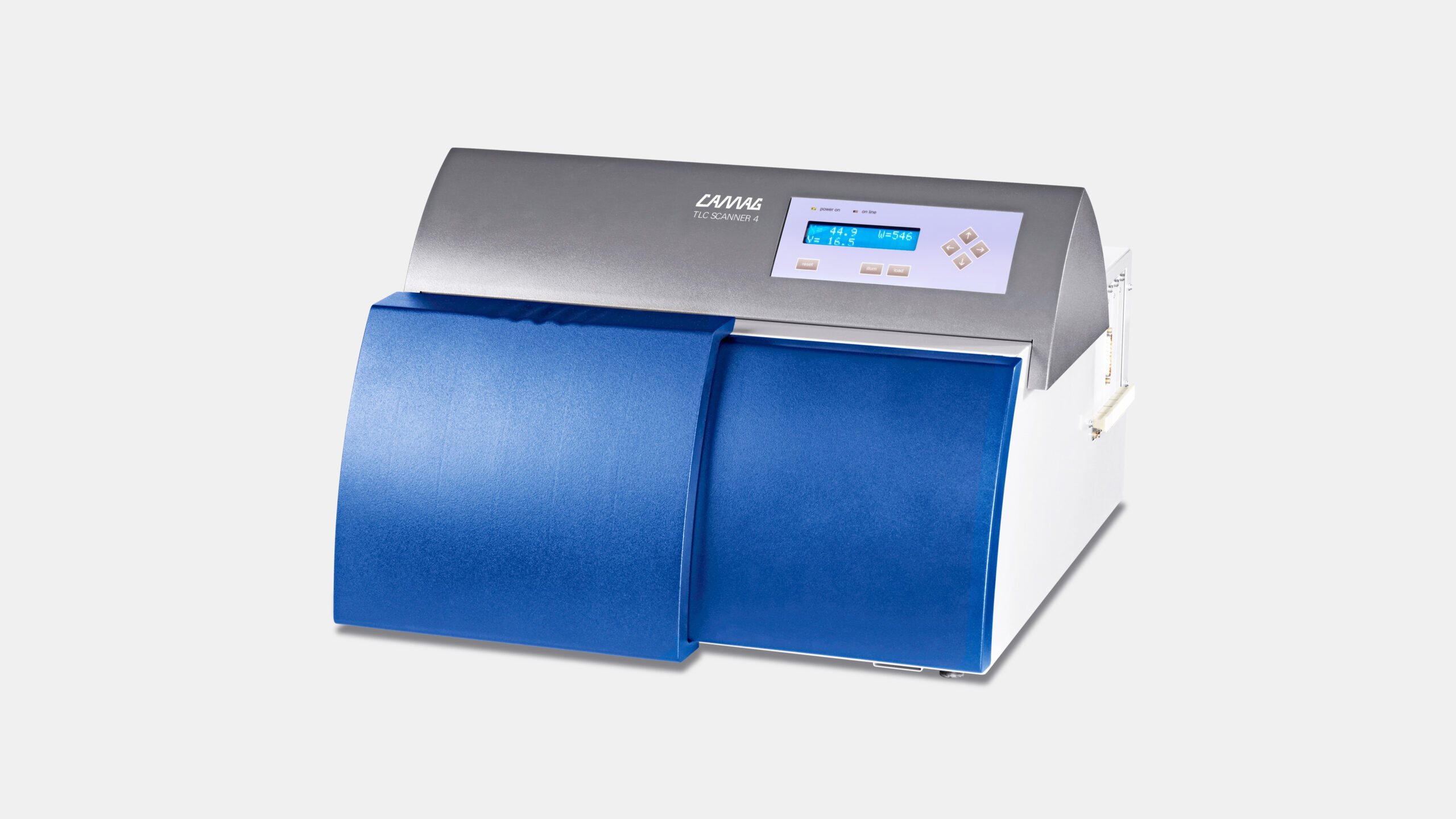

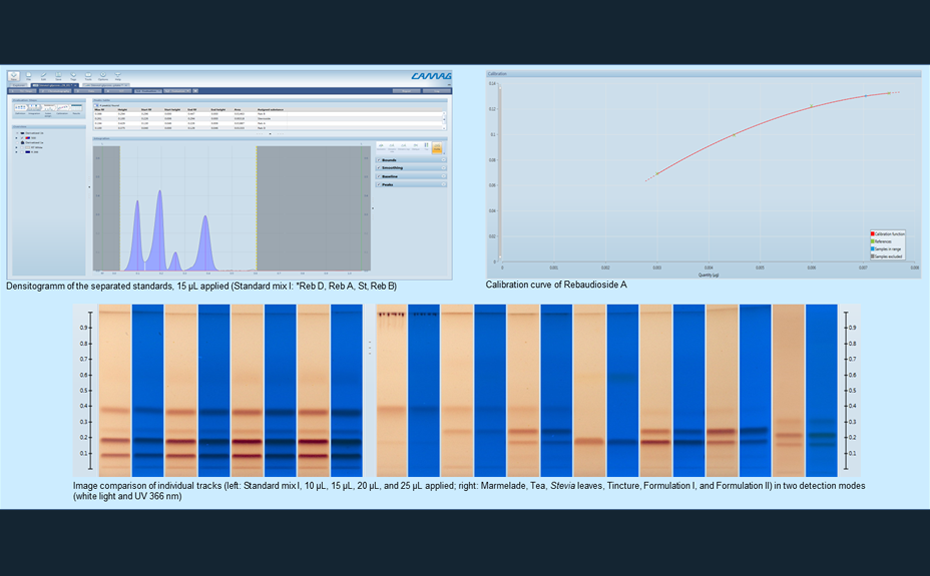
![HPTLC-MS full scan mass spectrum of Rebaudioside A zone showing most pronounced signals at m/z 989.6 [M+Na]+](/wp-content/uploads/2024/08/cs_stevia_img_2_1.png)





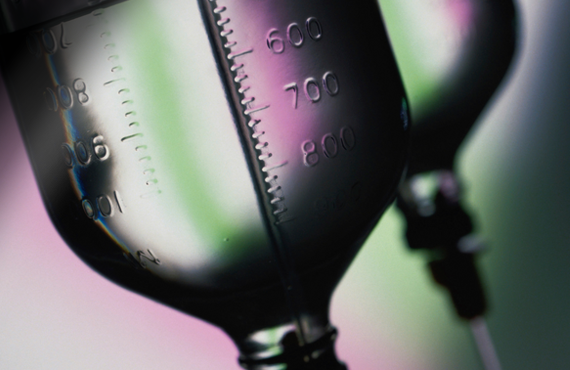
![Graphical abstract from [1]](/wp-content/uploads/2024/08/CBS128_Identification-and-quantification-of-glucose-degradation-products_img1.png)
